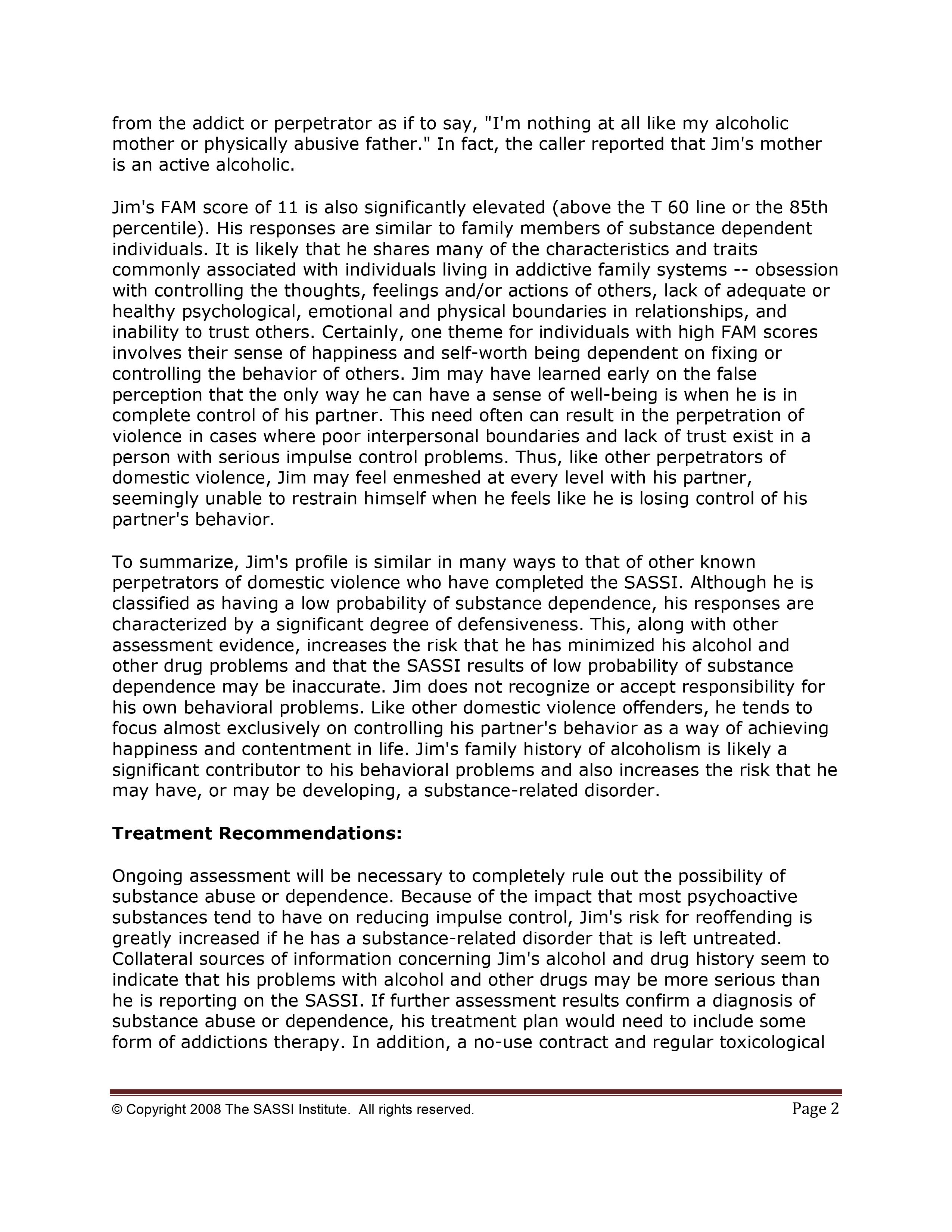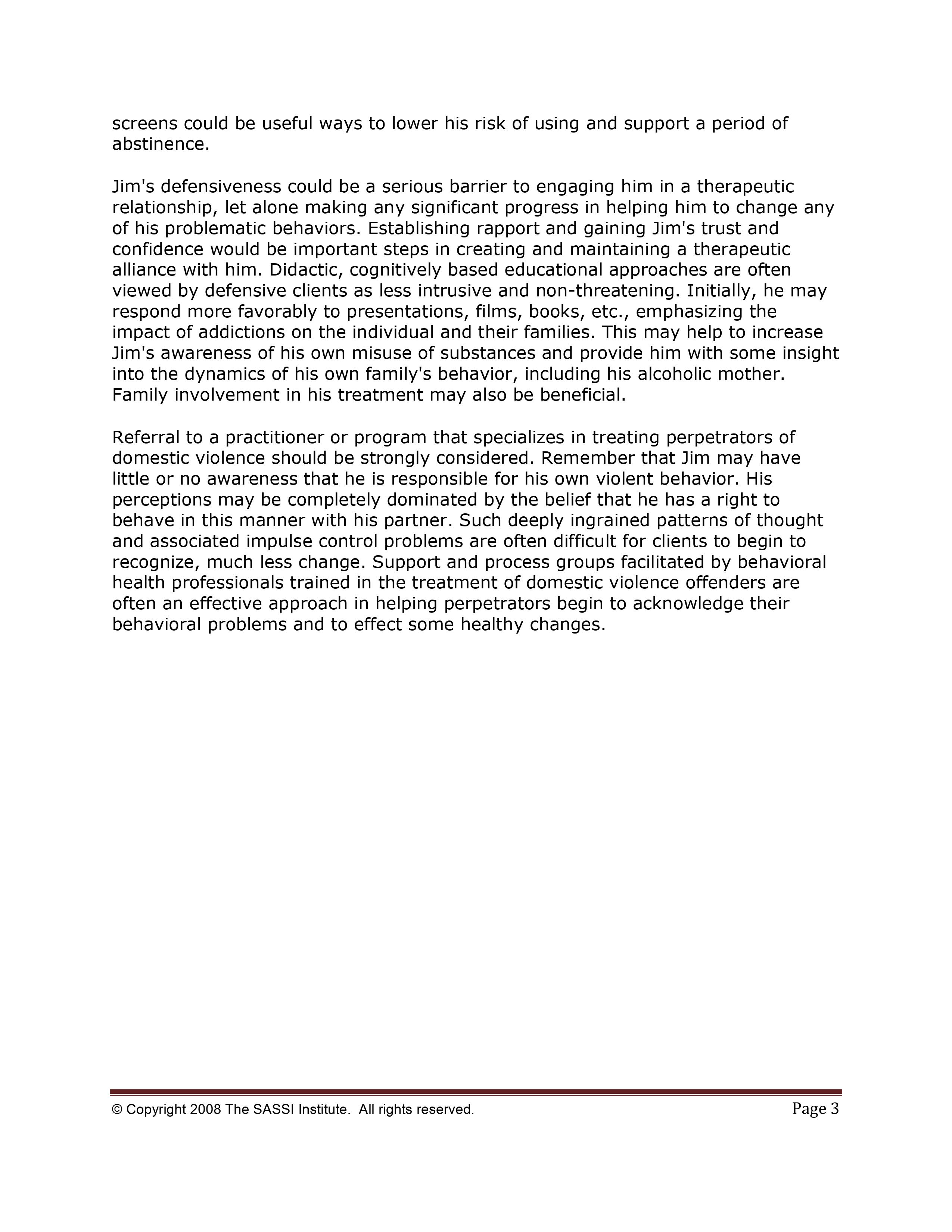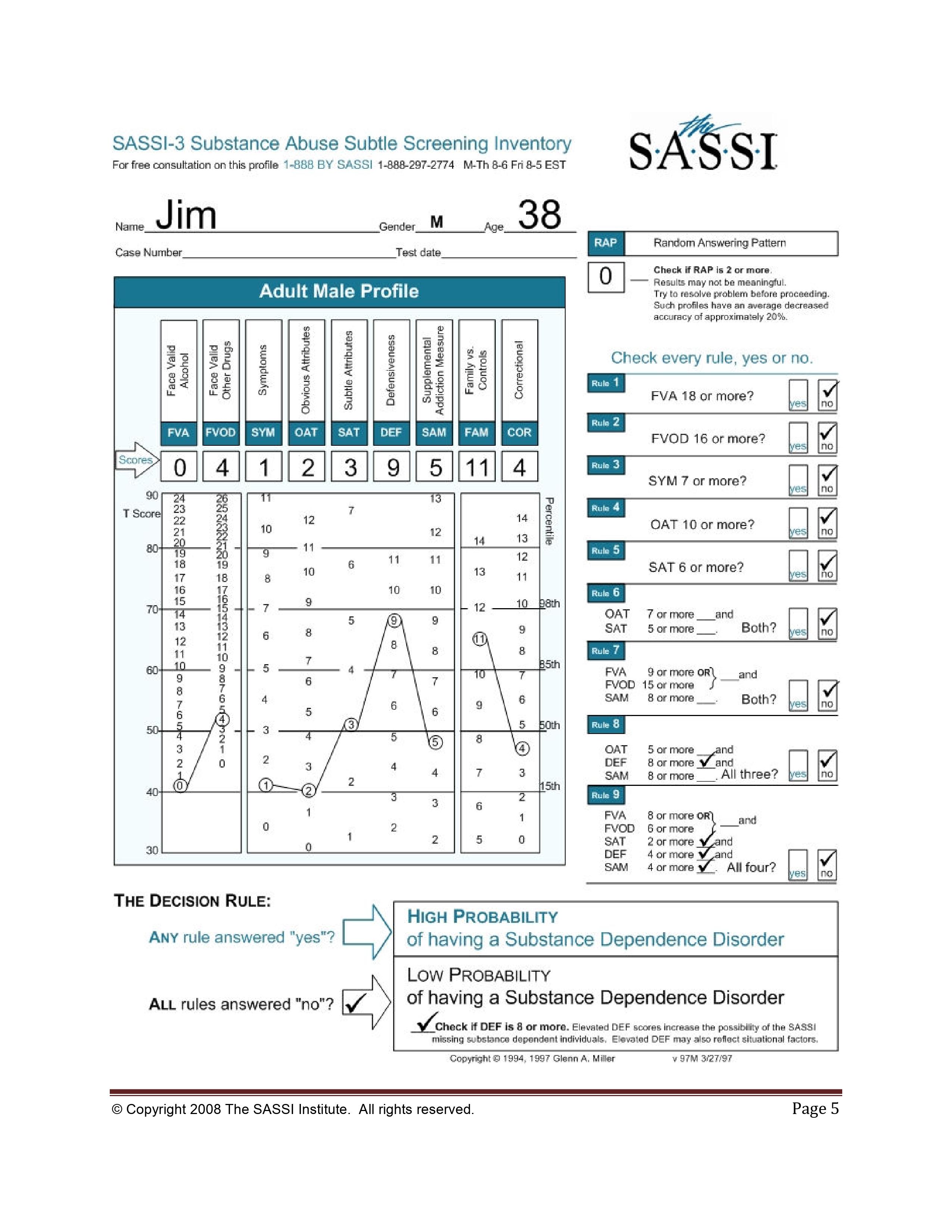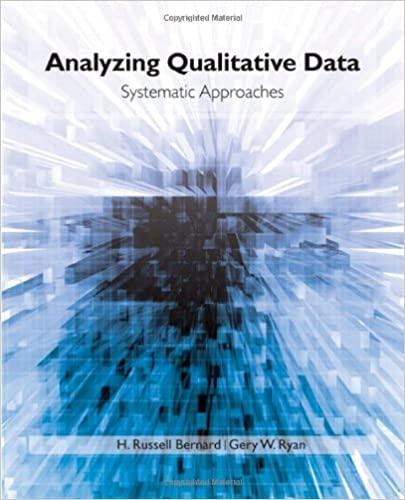Answered step by step
Verified Expert Solution
Question
1 Approved Answer
Please refer to the attached SASSI (Substance Abuse Subtle Screening Inventory). Based on the information provided in the attached report: what key pieces of information
Please refer to the attached SASSI (Substance Abuse Subtle Screening Inventory).
Based on the information provided in the attached report:
- what key pieces of information are provided by the report?
- What additional information would you want to gather through assessment?




SASSI INSTITUTE Defensiveness and Non-voluntary Clients: The Importance of Additional Assessment Data The client is a 38-year-old male named Jim (not his real name), who was referred for a substance abuse evaluation following a second arrest for domestic violence. The practitioner calling in the profile reported having collateral evidence substantiating a significant history of alcohol abuse for this client. The SASSI results indicate that Jim has a low probability of having a substance dependence disorder. He is not acknowledging any significant problematic use of alcohol (FVA=0) or other drugs (FVOD=4). In fact, he denies having any of the symptoms commonly associated with substance dependence (SYM=1). However, note that Jim's responses are highly defensive (DEF=9) and significantly similar to individuals who are instructed to minimize and conceal problems. Given that his report on the FVA and FVOD is in direct conflict with information from other sources, it is likely that he is minimizing the degree to which he has experienced alcohol and other drug problems or related symptoms. This increases the risk that the SASSI classification of low probability may be in error in other words, the accuracy of the decision rules may be slightly decreased. As in most assessment situations where the client is relatively defensive, augmenting self-reported alcohol and drug history with data from external sources is advisable before ruling out substance abuse problems. Experienced SASSI users working in criminal justice, EAP, DOT, child protection, and other similar settings will recognize this profile as relatively common for clients who are mandated for assessment. Indeed, Jim has been charged with assaulting his partner for a second time. One possibility is that he fears a harsh punishment may be coming if he does not present himself in a favorable way. He may also be convinced that he is not to blame for his behavior, explaining that his partner provoked him or that he was acting in self-defense. While the SASSI does not reveal the exact cause or reason, the high DEF score is a strong indicator that Jim approached the assessment in a defensive manner. Notice also that Jim's OAT score is bordering on significance given that it falls right on the 15th Percentile (OAT=2), meaning that only 15% of the general population would score this low. A score in this range usually indicates a person who does not identify with any of the problematic behaviors typically associated with substance abuse (for example, anger management problems, negativity, self-centeredness, etc.). Jim is not likely to acknowledge having these behaviors and probably wants to be viewed as being completely different from people who do. Individuals with a family history of addictive or violent behavior often cope by distancing themselves Copyright 2008 The SASSI Institute. All rights reserved. Page 1
Step by Step Solution
There are 3 Steps involved in it
Step: 1

Get Instant Access to Expert-Tailored Solutions
See step-by-step solutions with expert insights and AI powered tools for academic success
Step: 2

Step: 3

Ace Your Homework with AI
Get the answers you need in no time with our AI-driven, step-by-step assistance
Get Started


